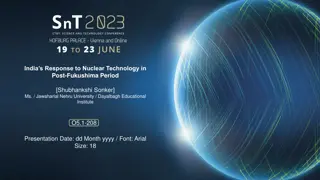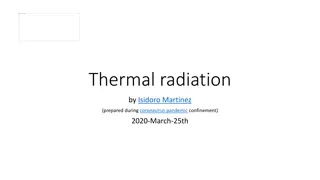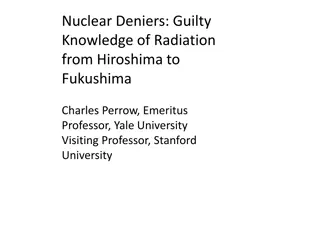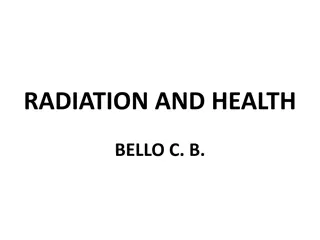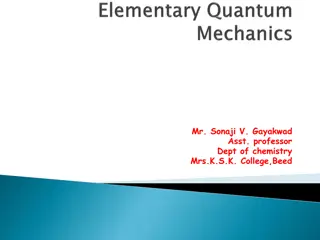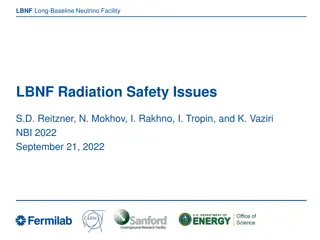Examination of Radiation Risks and Communication in Fukushima Disaster
In the aftermath of the Fukushima disaster, this content delves into the assessment of radiation dangers, the effectiveness of risk communication to the public, comparisons with the Chernobyl incident, and insights into governmental responses. It highlights the impact on marine life, contrasts the severity with Chernobyl, and examines the government's evolving stance on health risks to Tokyo residents.
Download Presentation

Please find below an Image/Link to download the presentation.
The content on the website is provided AS IS for your information and personal use only. It may not be sold, licensed, or shared on other websites without obtaining consent from the author. Download presentation by click this link. If you encounter any issues during the download, it is possible that the publisher has removed the file from their server.
E N D
Presentation Transcript
Group 4: Tan Yong Jia, Somesh, James
Fear and numbers in Fukushima. Significance
Qns addressed How dangerous was the radiation from the Fukushima disaster? Were the risks well communicated to the general public?
SHORT SUMMARY of JAPAN Triple disaster 1.Magnitude 9 Earthquake 2. Tsunami 3. Fukushima Dai-chi nuclear power station
International Nuclear and Radiological Event Scale (INES) rating of 7(highest level) 5,000 to 15,000 terabecquerels of radioactive material was reaching the ocean. Several species of fish caught off the coast of Fukushima in 2011 and 2012 had cesium levels that exceeded Japan's regulatory limit for seafood
COMPARISON WITH CHERNOBYL Same INES level Chernobyl 7 times more severe Chernobyl affected more humans //japan more to the ocean Little public health risk in japan as compared to chernobyl
Were the risks well communicated to the general public? 1.Risks analysis by government 2. Risks explanation by the media
What did the government say? government representative chief scientific adviser, Sir John Beddington 11th March-reassured public that under the worst-case scenario there would be no health problems in Tokyo, March 18th-Sir John's worst-case scenario became enhanced "the danger to Tokyo would be modest and would only involve staying indoors for 48 hours. Later on -change to consider leaving
Media attempting to explain the exposures using a single uni (millisievert)
Another common form of explanation a sample of spinach was estimated to have 1.47 becquerels of 131I per kilo they estimated you would need to eat 750 kg of this spinach to get the same exposure as from a single round trip flight from San Francisco to Washington, DC (0.05mSv). MSV = millisievert
QUESTION DO YOU FEEL MORE ENLIGHTENED ABOUT THE RADIATION RISKS OF FUKUSHIMA NOW?
SO BACK TO THE QUESTION Were the risks well communicated to the general public?
Take Home Message Don t anyhow bomb. Don t Know Say Don t Know. Don t try to act smart when you are not. Do not make empty promises.



